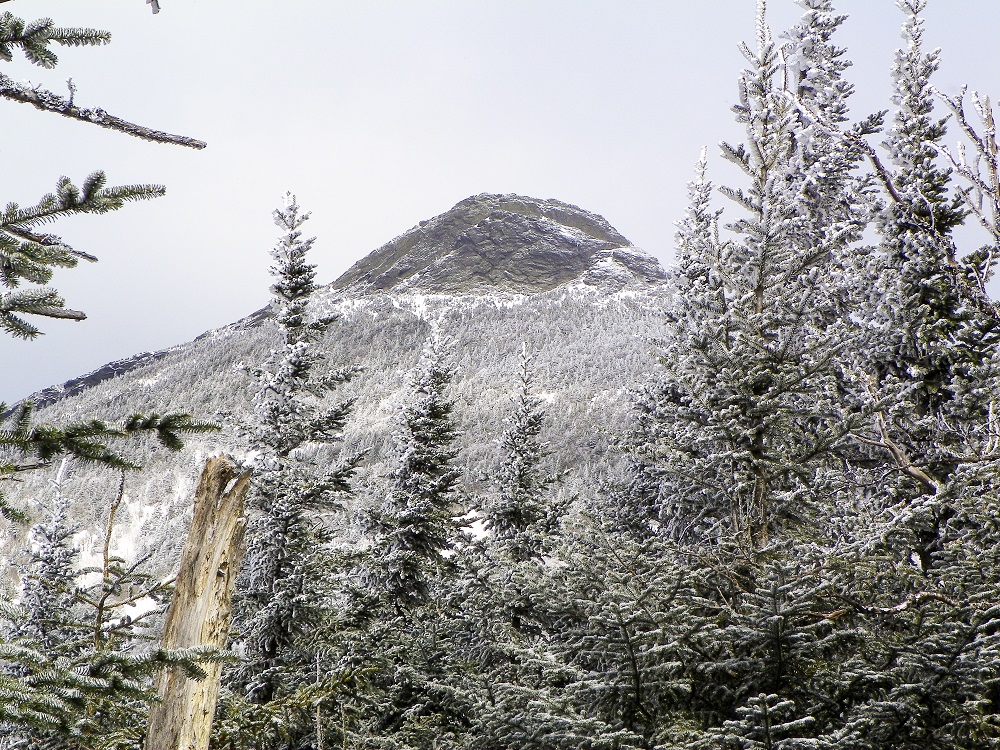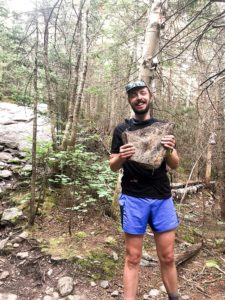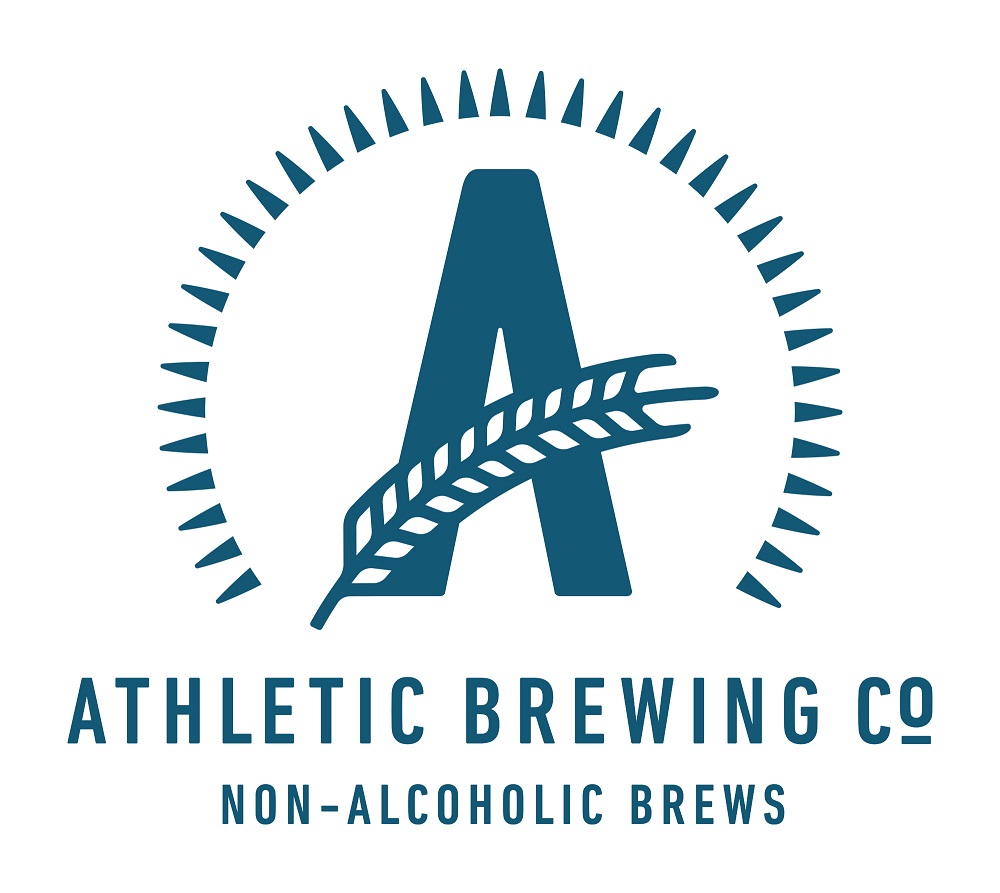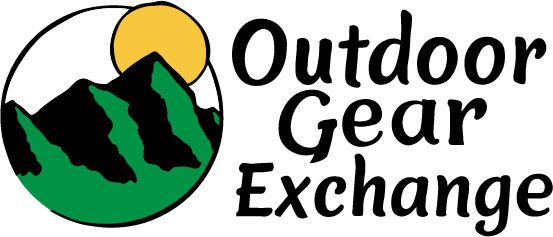This article was written by Scott Berkley and previously appeared in the Winter 2018 Long Trail News.

The situation: an injured hiker sitting beside the Monroe Trail on Camel’s Hump, a mile below the summit a few hours after sunset in early November. There was a light snowfall with temperatures around freezing. The hiker was calm, protected by layers of clothing, and well-fed thanks to an emergency supply of peanut butter cups.
On a routine neighborhood hike an hour before, a slip and fall had led to a fractured tibia and fibula—both bones in the lower leg. A simple fracture (no broken skin), but movement impossible without outside help. The victim stayed warm, thanks to hefting a 30-pound rock up and down repeatedly, and kept focused by working on a splint improvised from pack straps, sticks, and a sequence of shoelaces. But mostly playing a game of waiting. Waiting for rescue, however it might arrive.
Every year a small percentage of backcountry travelers find themselves needing rescue. I had been on several search and rescue missions in my past life as a member of the Appalachian Mountain Club’s White Mountain hut croo, and lower-leg injuries requiring litter carries were common.
Usually logistics were straightforward: send a well-equipped hasty team to stabilize the victim, followed by a larger team of rescuers, often several dozen members of a local search and rescue (SAR) team, to carry a litter down rough terrain for hours on end.
The twist this time was that I was the victim.
On November 9, 2017, I set off on a standard after-work hike with my partner Phoebe. We’ve both logged hundreds of hours running and hiking in the dark, so we thought nothing of setting off from the Monroe trailhead at 4:45 p.m., prepared with headlamps and warm clothing. Six-thirty saw us on the summit, admiring winter stars emerging from scudding clouds. On the descent light snow began to fall, and the wet runoff froze into slick sheens. In a moment of inattention I slipped on an icy slab and landed awkwardly in a jumble of rocks below.
It wasn’t a long or extraordinary fall; I’ve emerged unscathed from dozens of longer and more dramatic tumbles. However, when I tried to stand my leg crumpled beneath me, and I yelped as I felt bones grinding together above my ankle. Phoebe and I took one look at my leg, folded at a 90-degree angle. While I stared, uncomprehending, Phoebe put her experience in many long and complex rescues to work, and knew exactly what to do. She helped me put on all our warm layers, moved me out of the wet treadway onto a dry pine bough, and ordered me to eat plentiful snacks and hydrate. I shook warmth into my fingertips, and watched her headlamp bob down the trail. With no cell service on that side of Camel’s Hump, she had to find a landline phone to call 911.
As I tried to stay warm at about three thousand feet, I contemplated what was happening below. Could a litter carry be mounted, and if so, how long would it take to reach me? It would take time to summon a sufficient team, and with snow predicted, I knew rescuers would need still more time to prepare for their long outing.
All the same, it wasn’t lost on me that I was lucky to have broken my leg where I did. The Waterbury area has one of the best SAR infrastructures in the country, with multiple teams close by. What’s more, I was on a reasonably accessible trail with a solid treadway, not stranded on some complex part of Bamforth Ridge. Less than three hours after Phoebe called 911 from a house near the base of the trail, I saw her headlamp and two others swinging up the switchbacks below.
The two-man hasty team was from Richmond Rescue. While Chris straightened my leg and splinted it with an air cast, Brad prepped me for a long litter ride by wrapping me with heat packs in a reflective space blanket and a sleeping bag. Around 11:00 p.m. 26 additional rescuers arrived, carrying a litter with an all-terrain wheel for use on smooth ground. Even though they came from six different rescue organizations, they worked as a fluid unit as they flipped me into the litter and strapped me in, taking care to keep me warm, comfortable, and dry. Not long after, following a few bumpy sections requiring roped belays on steep sections of trail, the litter started to feel like a cozy bed, and I fell asleep.
Littering is tough work, and it can’t have been easy to get my six-foot-three, 190-pound frame down two miles of wet, icy trail to a waiting ambulance. But the teams made short work of it, arriving at 2:30 a.m. Eight hours from accident to ambulance is the fastest, most effective rescue I could have dreamed of.

I am still in awe of the work that the teams from Richmond Rescue, Camel’s Hump Backcountry Rescue, Waterbury Backcountry Rescue, Huntington SAR, Mad River Valley Ambulance, Stowe Mountain Rescue, and Colchester Technical Rescue did to get me off the trail as quickly and comfortably as they did. The rescuers came from a wide variety of backgrounds, both outdoor and professional, but each and every one had decided to leave a warm house and come out on a cold night to help someone they had never met—and to do it with the utmost respect, professionalism, and technical proficiency.
Now, almost a year after that dark and stormy night on the Monroe Trail, my leg has healed with a few fun scars. I’m back to roaming the Green Mountains on foot, but I’m still analyzing what happened that night, and how I can travel more safely in the backcountry in the future. Though there’s not much I could have done to avoid the bad luck of breaking my leg, I wish I had been prepared with a full winter kit rather than the bare-bones equipment I used for short autumn outings. It’s all too easy to get tricked into going light in the mountains during the corner seasons, but going light in cold weather compromises self-sufficiency from the start.
I am lucky that others came to my aid when I could not be self-sufficient, and I am beyond fortunate that, when disaster struck, I was in an area where backcountry rescue is so well orchestrated and effective. Here’s to the work of our local rescue teams, and to many years of safe trips into the mountains!
Scott Berkley is a trail runner and backcountry skier who just can’t quit the green hills of New England. After six years spent as a seasonal employee of the Appalachian Mountain Club, he now calls Richmond home. As an AmeriCorps member serving with the Catamount Trail Association, Scott leads trail work projects and youth Nordic ski programs along the 320-mile Catamount Trail.



















It makes me wonder, if like me, you have done similar hikes or skiing- solo? That’s a totally different scary scenario! Got me thinking…
Don’t run in the dark, in winter, and on trails you know are bound to be potentially dangerous due to icy/slippery conditions. I am always surprised by outdoor adventurists who feel the need to such risks!
Well-written story, Scott.